
News
By Mae Hanzlik, November 12, 2020
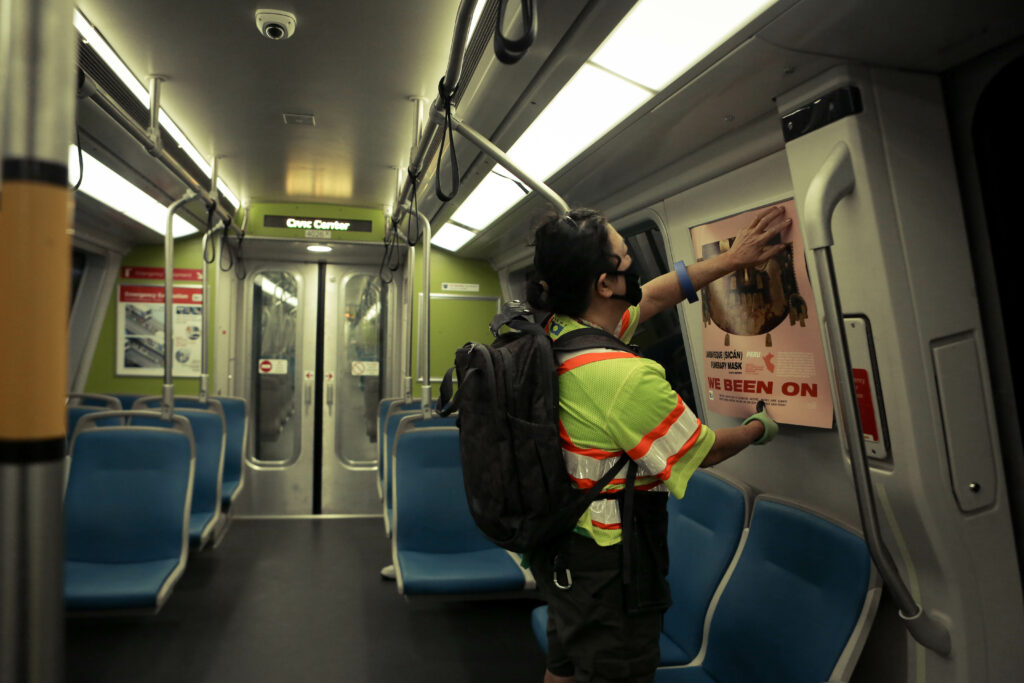
Bay Area Rapid Transit worked with artist Tosha Stimage to pilot an approach to normalize the culture of wearing a mask on transit and deconstruct the racism worsened by COVID-19. Stimage designed and implemented a campaign consisting of popups, posters, and video montage that encouraged riders to reimagine masks and their benefits.
In partnership with Forecast Public Art and with funding from the Kresge Foundation and the National Endowment for the Arts, Smart Growth America (SGA) launched the Arts & Transportation Rapid Response initiative, seeking to partner transportation agencies with artists to develop creative solutions to COVID-related transportation challenges. Read more about the project in this post, and check back all week as we publish a new story each day.
The challenge
Nationwide, the spread of COVID-19 has resulted in serious issues and concerns for people of color, in particular Black, Brown, and persons of Asian descent, due to racially-motivated harassment and violence. Additionally, the political battles over masks has created a hostile environment that has caused transit users to distrust and profile one another. San Francisco Bay Area Rapid Transit (BART) recognized the additional stigma facial coverings may attach to people who already experience discrimination while they sought to ensure that transit is safe and as welcoming as possible for all riders.
The project
With help from Forecast Public Art, Smart Growth America selected and hired Bay Area artist Tosha Stimage to work with BART to pilot an approach to normalize the culture of mask wearing on transit and address racism worsened by COVID-19.
Stimage designed and implemented a campaign that encouraged riders to reimagine masks and celebrate their benefits and long history. With riders in mind, Stimage created a series of eight unique print posters featuring different cultural masks that were installed in BART stations and trains. Each poster included information about the mask’s culture and use, as well as a powerful tagline intended to encourage people to rethink the benefits of wearing masks, "Whether storytelling or celebrating culture, masks have always served a useful function. This time they can help us protect each other."
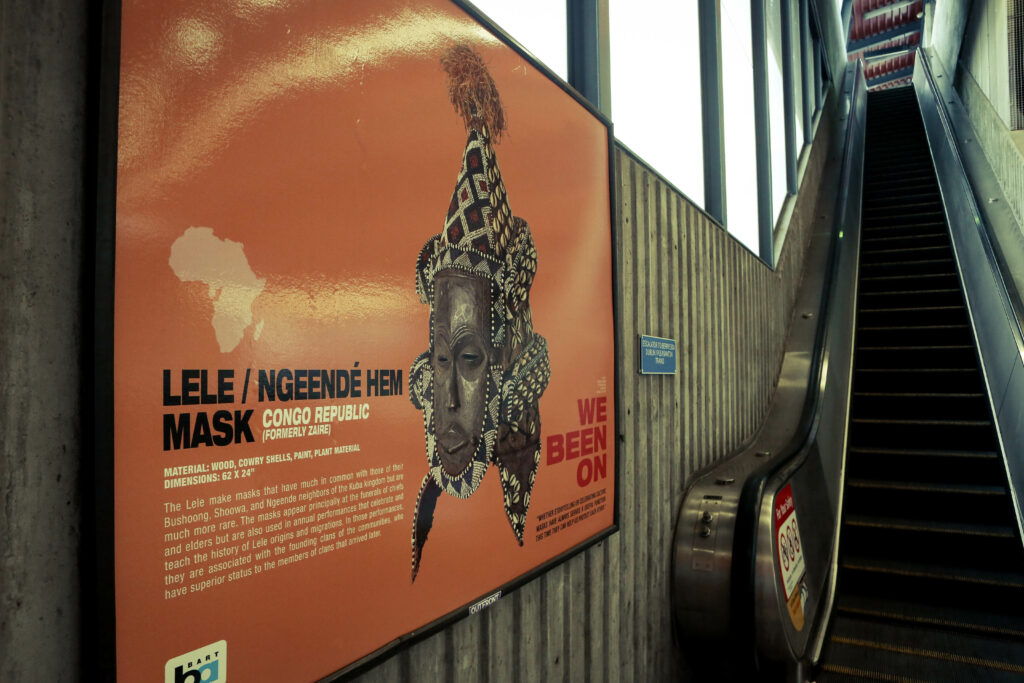
Tosha also held two popups at Civic Center station in downtown San Francisco to educate riders about the rich history of mask wearing. Tosha and BART staff safely engaged with riders and handed out about 300 giveaway bags containing masks, hand sanitizer, alcohol wipes, individual hand straps, and postcards—so riders could stay in touch with friends or family far away. To add another visual element to the pop-up, Stimage worked with another artist to create a video montage of different ceremonial uses of masks.
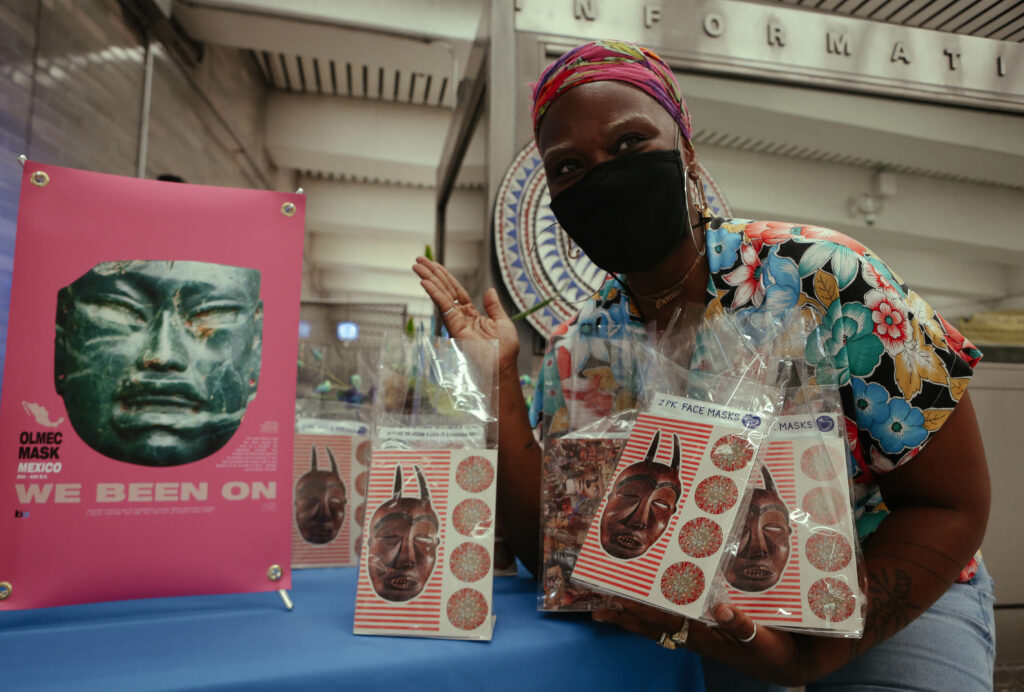
Project team
- Tosha Stimage, Artist
- Jennifer Easton, Art Program Manager at BART
- Linton Johnson, Strategic Program Manager at BART
- Alicia Trost, Chief Communications Officer at BART
The results
“By working with an artist we got a unique solution that is both attention-getting and subtle yet impactful in delivering the message.“
- Jennifer Easton,
Art Program Manager at BART
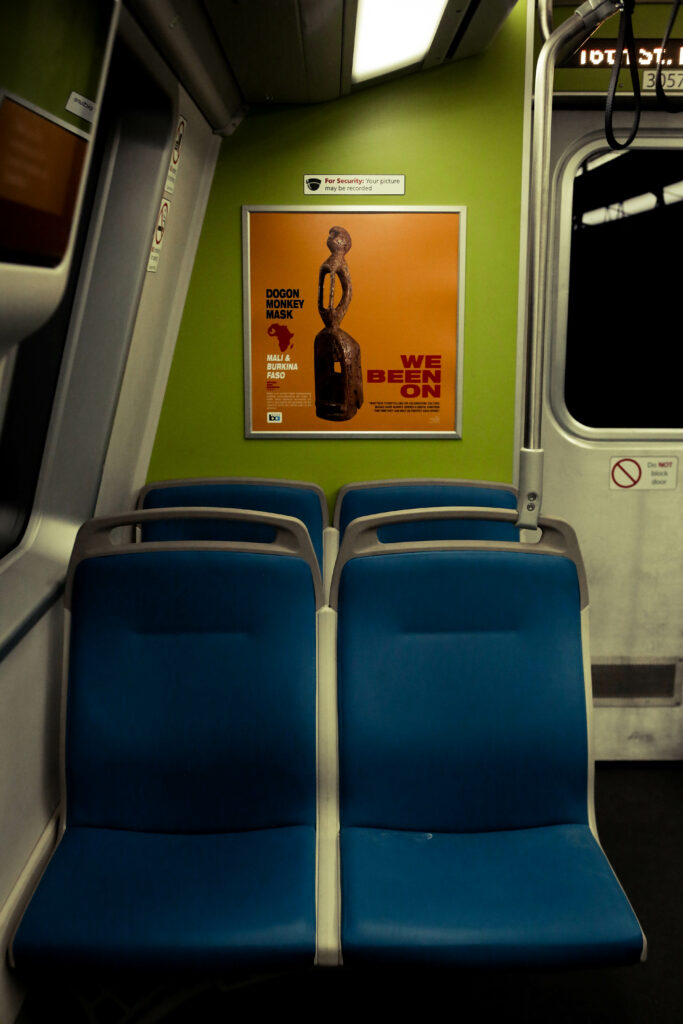
From the outset of this two-month project, BART knew that they wouldn’t eradicate the ingrained racism that exists on public transportation. Instead they hoped to open a dialogue that acknowledged the racism experienced by riders of color—especially Black, Latinx, and Asian American people—and then pilot creative solutions to address it.
By working with Stimage, BART was able to effectively convey the importance of masks in a visually engaging, joyful way that didn’t look like a traditional transit message.
For transit agencies around the country seeking to launch similar initiatives to retain or welcome back riders, consider the following reflections from BART and Stimage's work:
Acknowledge and appreciate your riders.
The pop-ups hosted by Stimage and BART brought unexpected levels of positive feedback from customers who appreciated being seen and offered a small gift. Rider appreciation, especially during stressful times like these, goes a long way in helping people feel they’ve made the right choice in staying with or returning to transit, and transit agencies will need to make riders feel safe and welcome in order to regain ridership and survive today’s financial challenges.
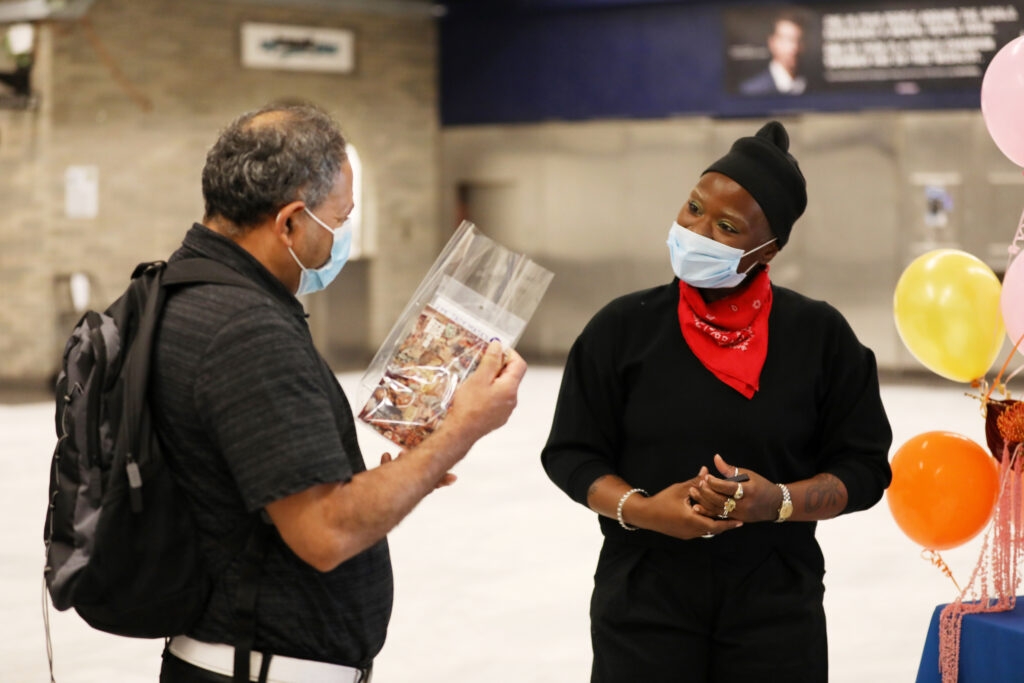
Set loose project parameters to leave room for creative exploration by the artist.
As with all projects, setting goals and parameters is important, but if your agency is seeking to creatively address a challenge, then it is important to be flexible and open to bold ideas and provide space for creativity. Providing room for the artist to adjust direction and brainstorm daring solutions, especially in the early stages of the project, will pay off in the end.
Prioritize space for dialogue and trust-building on project teams, especially for projects with short timelines.
Addressing racial profiling and bias is not a simple or easy problem, and addressing this within a system like public transportation is even more difficult. To do so effectively requires project teams to make space for trust-building and dialogue, and be honest about potential issues up front.
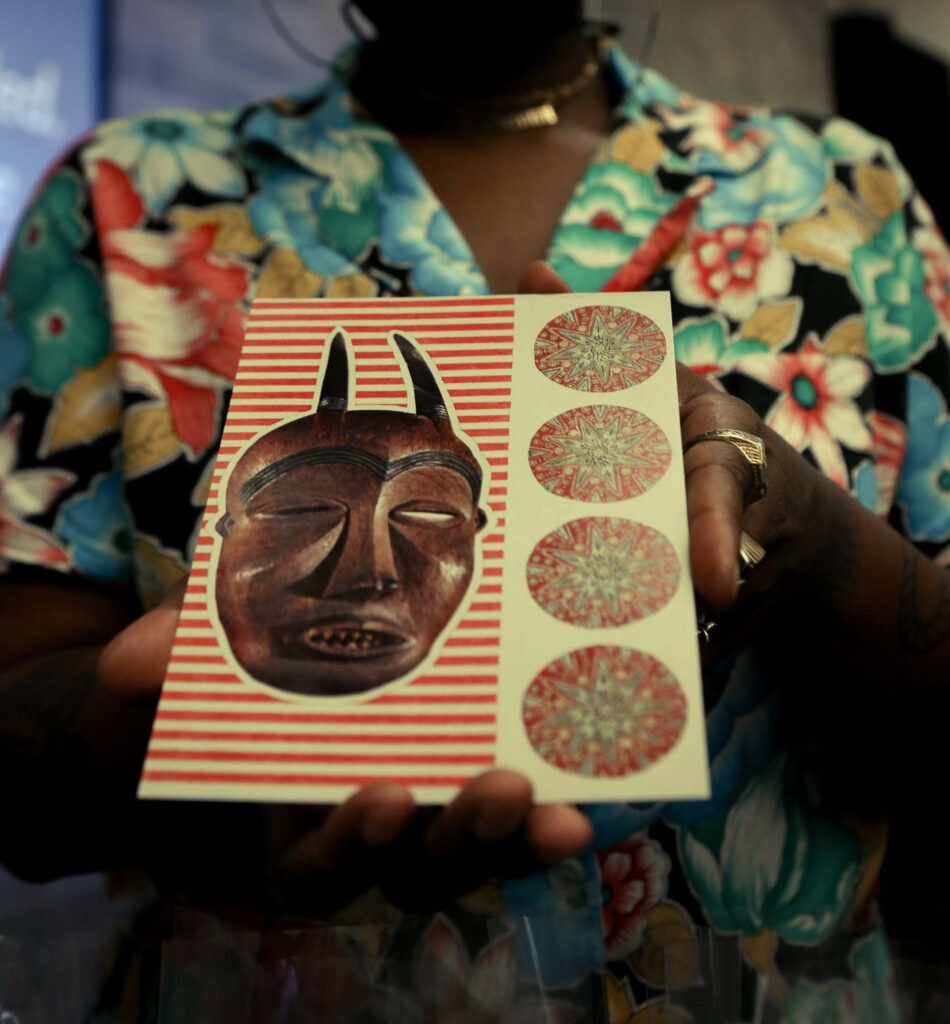
“You can’t replace the human element of things, there is just something about seeing and engaging with people.”
- Tosha Stimage, Artist
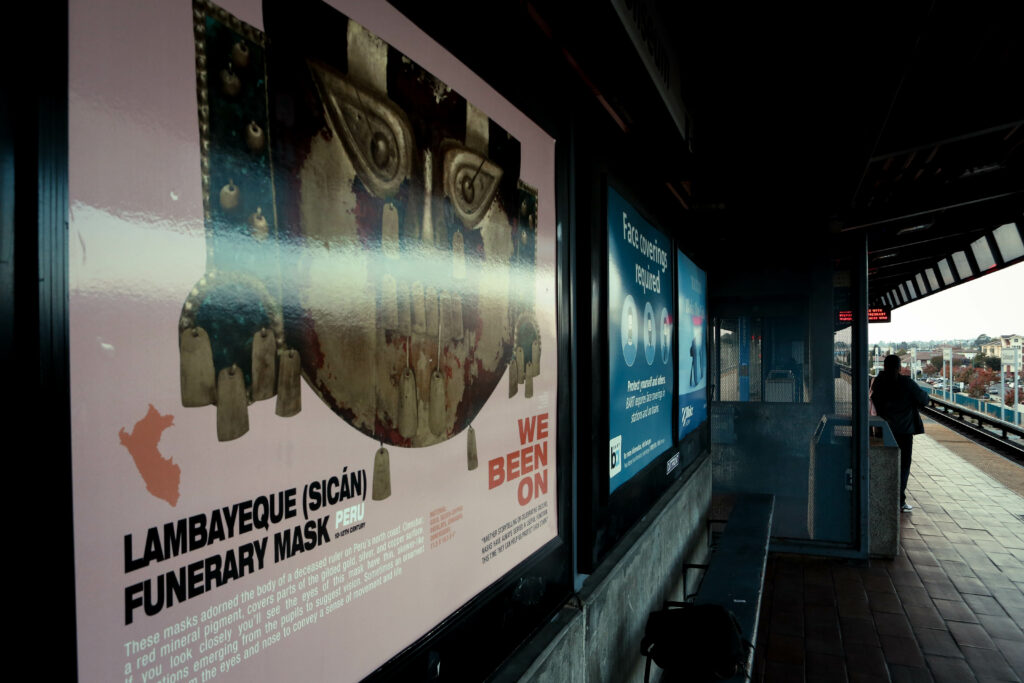
Related News

© 2025 Smart Growth America. All rights reserved
Site By3Lane Marketing








